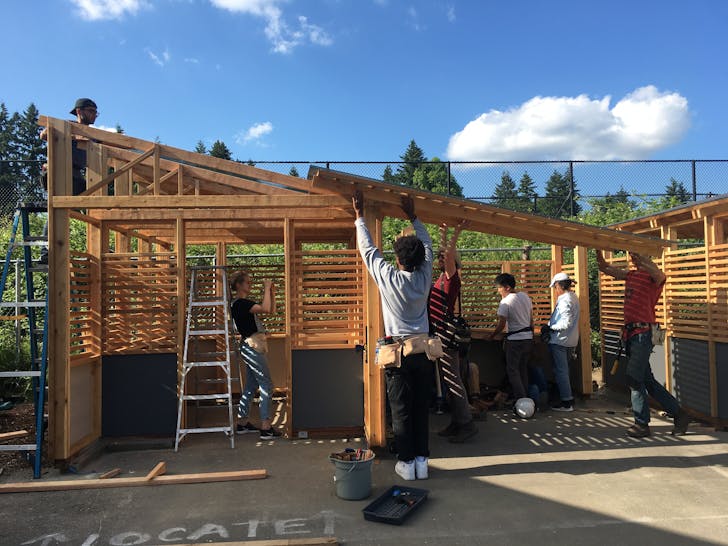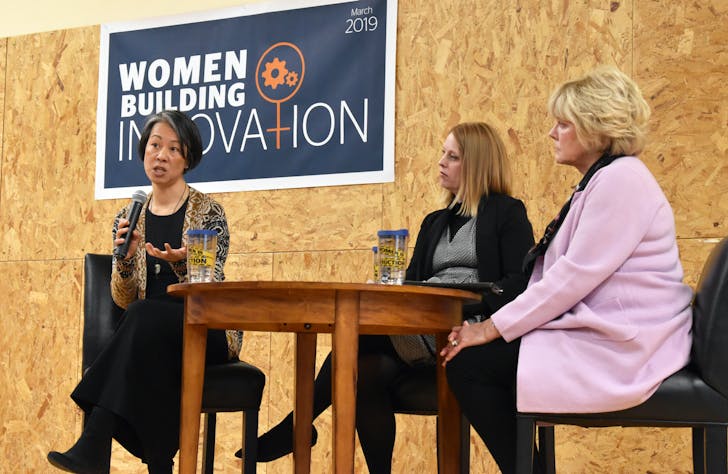The Deans List is an interview series with the leaders of architecture schools, worldwide. The series profiles the school’s programming, as defined by the dean — giving an invaluable perspective into the institution’s unique curriculum, faculty and academic environment.
For this installment, Archinect spoke with current University of Washington College of Built Environments dean Renée Cheng. A licensed architect with years of experience working at firms like Pei, Cobb, Freed and Partners and her personal practice, Cheng-Olson Design, Cheng has specialized in researching the application of new technologies within the design and construction process while also helping to pioneer innovative project delivery approaches. In our interview, Cheng shares how these approaches can be applied to the wide-ranging curriculum of an integrated design program.
Dean Cheng speaking at a recent Women in Construction symposium in Seattle. Image courtesy of McKinstry.
Briefly describe CBE’s pedagogical stance on architecture education.
The University of Washington’s (UW) Department of Architecture sits within the multidisciplinary College of Built Environments (CBE) that includes the specific disciplines most central to the built environment: architecture, landscape architecture, urban design and planning, construction management, and real estate. The Department of Architecture recently completed a major revision of the professional degree program to further emphasize research, collaboration, and integration. These three themes are reflected in the other departments as well, creating a college with unique disciplinary strengths that can collaborate effectively.

What insights from your past professional experience are you hoping to integrate or adopt as the dean?
Running my own firm, as well as working in architectural firms large and small, has given me a healthy respect for the hard work it takes to run a firm today, as well as unbounded optimism for how architectural profession can become more relevant, resilient, and equitable.
My research and teaching experience has focused on emerging practices, everything from technologies like parametric design to organizational systems like lean and/or equitable practices.
I’m also interested to see how far we can carry the focus around collaboration, asking what it would mean for all of the faculty, students, and staff to be effective collaborators.
With these experiences in mind, I am applying some practices of inclusion and values-based decision-making to understanding the processes of the college. I’m also interested to see how far we can carry the focus around collaboration, asking what it would mean for all of the faculty, students, and staff to be effective collaborators.
All of this is related to the research practices program that I started at the University of Minnesota. I am in the process of growing that model and network here at the UW with the multiple disciplines of the college. At UW, for example, we are starting an applied research consortium with a group of founding members we hope to announce before the start of the next academic year.
